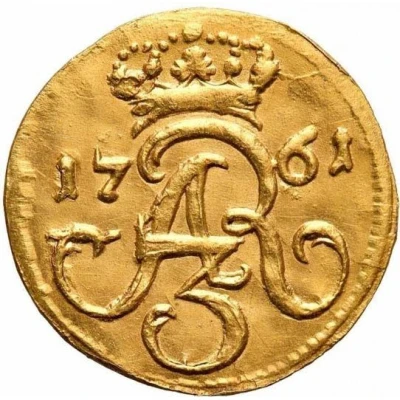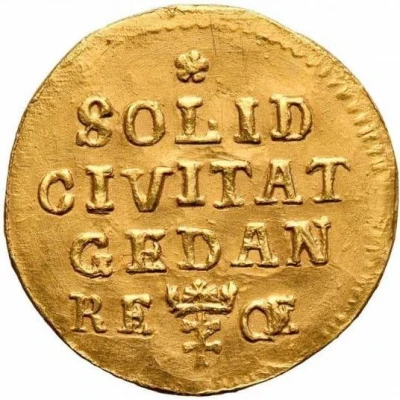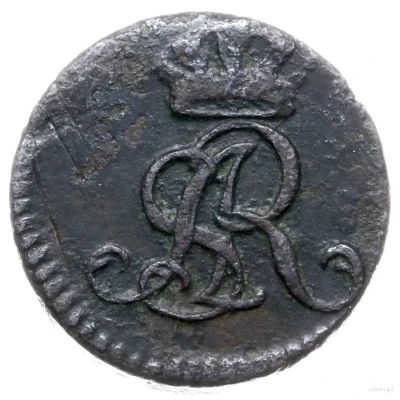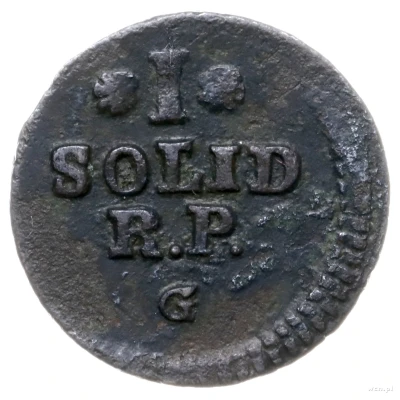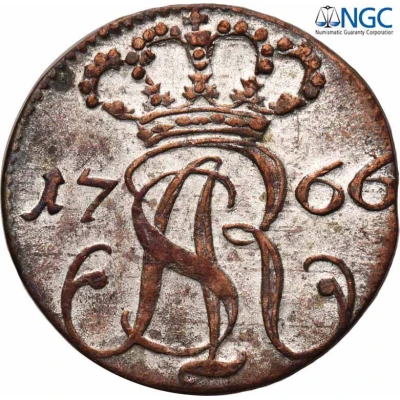
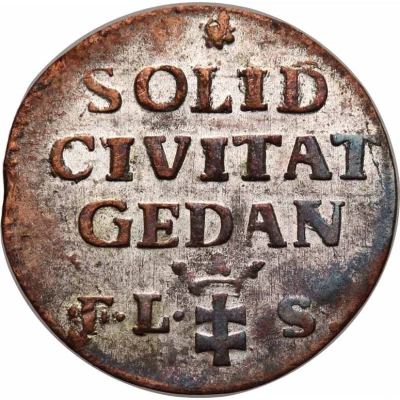

Szeląg gdański - Stanisław August Poniatowski Gdańsk
| Silver | 0.70 g | 16 mm |
| Issuer | Polish–Lithuanian Commonwealth |
|---|---|
| King | Stanisław II Augustus (1764-1795) |
| Type | Standard circulation coin |
| Years | 1764-1793 |
| Value | 1 Schilling (1 Szeląg) (1⁄90) |
| Currency | First Zloty (1573-1795) |
| Composition | Silver |
| Weight | 0.70 g |
| Diameter | 16 mm |
| Shape | Round |
| Demonetized | Yes |
| Updated | 2024-10-07 |
| Numista | N#143629 |
|---|---|
| Rarity index | 90% |
Reverse
Small star at the top, designer initials and the emblem at the bottom, denomination in the middle.
Script: Latin
Lettering:
SOLID
CIVITAT
GEDAN
F•L•S
Unabridged legend:
Solidus
Civitat
Gedanensis
F•L•S
Translation:
Solidus (also: Shilling, Szeląg)
City [of]
Gdańsk
Designer: Fryderyk Ludwik Stuber
Comment
Note: The szeląg from 1793 has quite a bit of a story behind it. Experts still haven't come to an agreement whether they are actually real contemporary coins.
On one hand, prof. Paszkiewicz says that they are definitely fake, made by antiquarians in the XIX century. This makes sense, considering that the big reform in 1766 took away the rights of Gdańsk (and other cities) to mint their own coins. For some reason, we only know of szelągs minted in almost pure silver, none of them minted in copper like circulating pieces. This might mean that it was only minted as a commemorative coin. According to M. Gumowski, this date isn't coincidental. He says that they were minted the day before the second Polish partition, the one in which Gdańsk was annexed by Prussia.
The initials on it are very mysterious too, noone known who “C L M” was. But the weird thing is that none of these countries reacted to it, especially considering how much Stanisław August Poniatowski wanted the cities to stop minting their own coin.
These coins were minted in a very professional way, but still not as well as coins from the XVIII century. A picture of it can be seen below.
Kopicki 7789 1764
In the collection:
Reich.
Kopicki 7790 1765
Kopicki 7791 1766
Pictures: © Antykwariat Numizmatyczny - Michał Niemczyk
Kopicki 7793 1766 pure silver
Kopicki 7794 1793 pure silver
Pictures: © Warszawskie Centrum Numizmatyczne
Interesting fact
One interesting fact about the Szeląg gdański - Stanisław August Poniatowski coin is that it was minted during a time of great change and upheaval in Poland. The Polish-Lithuanian Commonwealth was facing increasing pressure from neighboring powers, and the coin's minting was likely a response to the need for a stable currency during this tumultuous period. Despite the challenges of the time, the coin remains a testament to the rich history and cultural heritage of Poland and the Polish-Lithuanian Commonwealth.


